BRAZIL
History

History
Cities in BRAZIL
| Rio de janeiro |
History
Indians oldest inhabitants of Brazil
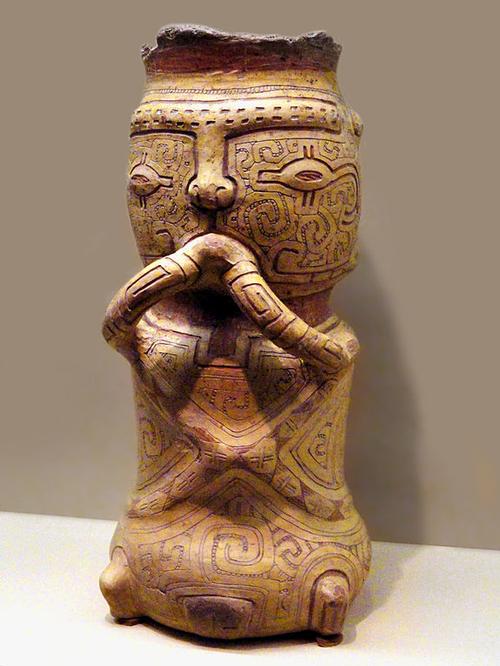 Brazil Marajoara CulturePhoto: Daderot CC 1.0 no changes made
Brazil Marajoara CulturePhoto: Daderot CC 1.0 no changes made
The oldest traces of human habitation date from around 11,000 years ago. At the time, people lived both inland and on the coast. This Indian population lived in small groups and lived on some agriculture, but mainly on hunting, fishing and collecting edible things. It is estimated that between 2 and 5 million Indians have lived in Brazil. At the time of the arrival of Europeans, there were four tribal families that belong together in terms of customs, rules, culture and language. In Minas Gerais the Nambikwara tribe, along the coast the Sambaquis, on the island in the Amazon estuary the Marajoara culture and upstream in the Amazon near Santarém a culture similar to the burial mound builders on the island of Marajó. Little is known about the history before the arrival of Europeans, due to the complete absence of written sources.
Portuguese rule
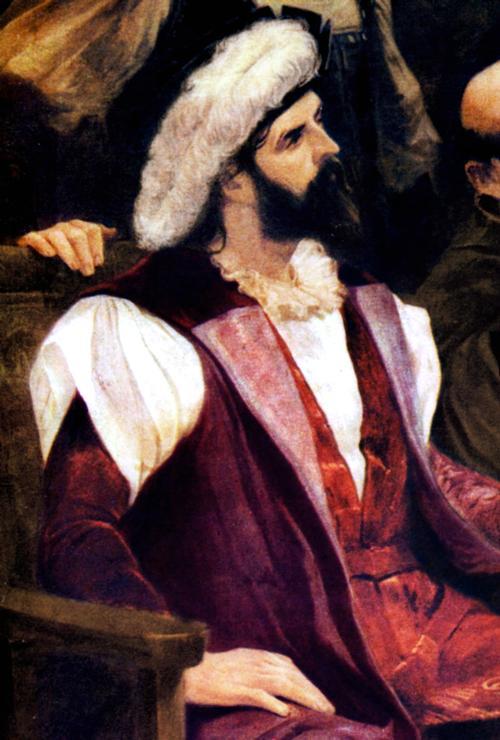
Portuguese navigator Pedro Alvares Cabral discovered Brazil on April 22, 1500, and under the 1494 Treaty of Tordesillas with Spain, the area fell to the Portuguese Crown. The country got its name from the "pau brasil" or brazilwood, which would become an important colonial product. The colonization of Brazil was difficult, because few precious raw materials were found besides the wood.
Nevertheless, Portuguese noblemen (donatários) were ordered by the king to make the country profitable. To this end, the coastal strip was divided into fifteen areas, "capitanias", for which they were responsible. The country was then called Terra da Santa Cruz (Land of the Holy Cross). In order to accelerate colonization, King Joâo III opted for a strong central government and in 1549 declared the strategically located settlement Salvador as its capital. An additional advantage was that Salvador was also strategically located in relation to shipping routes to Africa and India.
For the highly profitable sugar plantations in the Pernambuco region, black slaves had been brought in from Africa since 1532, especially from Angola and Guinea. In total, up to 1855, approximately 3.5 million African slaves were shipped to Brazil. In the sixteenth century, the Portuguese were attacked by the French on the site of what is now Rio de Janeiro. After the French troops surrendered, the Portuguese founded the settlement of São Sebastão do Rio de Janeiro.
Dutch rule lasts only a short time
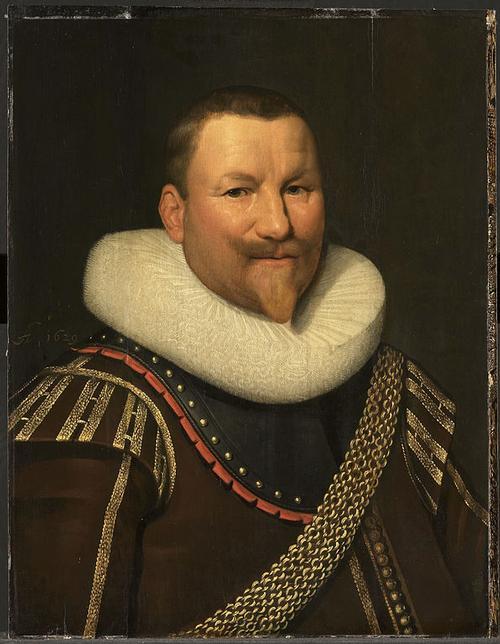
After Portugal came into Spanish hands in 1580, the Netherlands considered Brazil as a hostile territory. Brazilian coastal towns were repeatedly looted by the Dutch and the English.
The Dutch managed to gain a foothold in Brazil. In 1624 they took Salvador under the leadership of Piet Hein. Due to poor organization, this occupation would only last one year. Five years later he conquered the coastal area of Pernambuco and this occupation would last a quarter of a century under the rule of Johan Maurits van Nassau. The village of Recife was expanded further and in 1641 New Holland extended over the entire northeast corner of Brazil.
In that year, a peace treaty was also signed between the Republic of the United Netherlands (Holland and Zeeland) and that was a signal to the board of the West India Company (WIC), Heren Nineteen, to reduce the expenditure that Johan Maurits made. Johan Maurits was summoned a short time later to return to Holland and in 1654 the Portuguese took over the city of Recife without firing a shot and in 1661 the Dutch rights were sold to Portugal for NLG 8 million.
Gold finds change everything
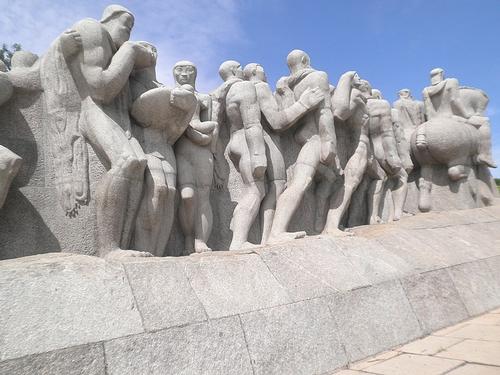 Monument fot Bandeiros Sao PaoloPhoto: CivArmy CC 4.0 International no changes made
Monument fot Bandeiros Sao PaoloPhoto: CivArmy CC 4.0 International no changes made
The explorations into the interior of Brazil started in the 17th century. These expeditions, called "bandeiras", were primarily looking for precious metals and slaves. At the end of the 17th century, gold was finally found in the mountainous Minas Gerais. Thousands of gold prospectors then moved inland. In the 18th century, more than 300,000 Portuguese immigrated to Brazil, and large numbers of slaves were also brought in from Africa to do the work in the mines.
Gold mining made the southeast of Brazil increasingly important and in 1763 Rio de Janeiro became the new capital of Brazil. The Indians were also hunted by the slave drivers at that time to serve as plantation workers. Portuguese clergy, especially the Jesuits, tried to protect the indigenous people and therefore regularly clashed with the Portuguese administrators. Around 1750 another conflict arose, but now the Jesuits were banished and the Indians lost their protectors.
In 1789, a revolt erupted against Portuguese rule in the Ouro Prêto area. The reason for this was renewed tax increases and the autocratic method of administration by the Portuguese. The rebellion was brutally repressed and insurgent leader José Joaquim da Silva Xavier was killed and many other prisoners exiled.
Portuguese court moves to Brazil
In 1808, the Portuguese prince regent and later King João VI with government and all fled from Napoleon and eventually settled in Brazil. Brazil now became semi-independent and Rio de Janeiro became the royal capital. The city developed enormously and eventually had 100,000 inhabitants. Among other things, João VI had palaces, a royal library, a legal and medical faculty built.
It was not until 1821 that João VI returned to Portugal and appointed his son Pedro regent of Brazil.
Pedro I declares independence

The Portuguese parliament immediately tried to get Rio de Janeiro back into line, but this failed because Pedro sided with the Brazilians and expelled the Portuguese armies with the support of English troops. He was ordered by his father to return to Portugal, but refused and declared independence from Brazil on September 7, 1822. Shortly afterwards he was crowned emperor of Brazil.
Administrative incapacity and a lost war against Argentina in 1828 made it difficult for Pedro I. The population was annoyed with the appointment of many Portuguese instead of Brazilians on the government of the country. Pedro I stepped down in 1831 and was succeeded by his son Pedro II, who was only five years old.
Until he came of age, Brazil was governed by a regency. At that time it was very restless in the country and there were even separatist movements here and there. In response to the problems, Parliament decided in 1840 to crown Pedro II, just 15 years old, as emperor. This worked out wonderfully well and Pedro II remained in power for 49 years and caused structural changes in social relations and in the economy. Under his rule, the country flourished economically. It took a long time before the state finances were restructured and a war with Paraguay (1865-1870) took place. The abolition of slavery without compensation to the slave owners (1888), as well as conflicts with the church and the army discredited the imperial government. In these years, the rubber industry developed at a very fast pace and was at its peak around 1850.
In 1910, however, the boom of the rubber industry had already ended because of the fierce competition from Asia. Coffee culture was also booming around 1850 and this too proved to be a popular export product. Both rubber and coffee plantations heavily relied on slavery that was banned in 1855, but was not officially over until 1888.
Brazil becomes a republic
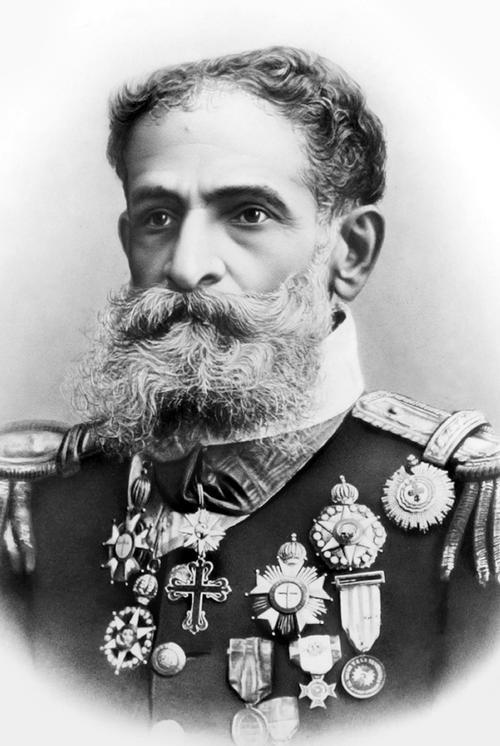
After this, the call for a republic grew louder and industrialists, traders and military wanted to end the monarchy. In 1889 a rebellion broke out under Marshal Da Fonseca, which forced Pedro II to leave the countryn.
Brazil subsequently became a republic under Da Fonseca, entirely after the example of the United States. The country was divided into twenty states with Rio de Janeiro in a federal district as its capital. The states were given a great deal of autonomy. The early decades of the republic were restless. The new republicans were lucky that Brazil was in control of the world coffee market at the time. A city like São Paulo and a port like Santos benefited enormously from this. For example, between 1890 and 1930, more than 2 million European immigrants settled in the state of São Paulo.
The interior of Brazil was deprived of all this wealth and fell into serious disrepair due to the abolition of slavery and the disappearance of sugar culture. One president succeeded another and economic boom alternated with crises, caused by the collapse of world coffee prices and the displacement of forest rubber by plantation rubber. During the First World War, the economy revived. In 1917 Brazil declared war on Germany, but it did not actively participate in this war. In the post-war years, the country remained politically and economically unstable.
But in the wealthy south and in the big cities, opposition to the power of the coffee farmers, from which all presidents hitherto had grown, increased. This led to a military uprising in 1922 that failed, however. In 1929, the coffee trade collapsed due to the stock market crisis in America, and the military took their chance.
End of the "Old Republic"
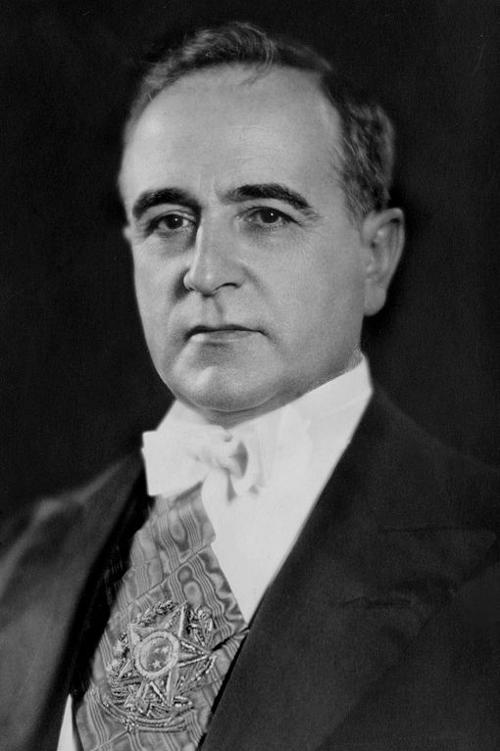 Brazil Getulio VargasPhoto: Public domain
Brazil Getulio VargasPhoto: Public domain
In October, a coup led by General Gétulio Dornelles Vargas was committed and the "Old Republic" came to an end. The popular Vargas played well with the masses and for 25 years Vargas remained the most powerful man in Brazil. He was able to play to the general public with dramatic speeches and with a policy that would improve the situation of the workers in particular. Inspired by Mussolini in Italy and Franco in Spain, he drew more and more power, and the federal government was now central to making important decisions, effectively sidelining the regional rulers. After a rebellion in São Paulo (1932), which was brutally repressed, Vargas strengthened his position by merging the armies of the states and bringing them under federal command and securing the support of this national army.
All this was enshrined in the new 1934 constitution and in 1937 all opposition was definitively eliminated. Political parties were banned, free speech was curtailed and unions were strictly controlled. Those who nevertheless objected (intellectuals, union leaders and political opponents disappeared into concentration camps and prisons. Through all these measures, he wanted to realize his big plan "o Estado Novo", the "New State": the state as the motor for modernizing society, among other things by switching from the agricultural economy to an industrial economy. Vargas' foreign policy was marked by opportunism. Initially, he supported Germany and Italy in World War II, but the Allies barely gained any military superiority, or he declared the As- powers the war and sent a Brazilian Expeditionary Force to Italy.
The urge for political and social reforms, which arose after the Second World War, has not survived the reign of Vargas. At the instigation of the United States, the army through General Enrico Gaspar Dutra requested that he resign. Vargas agreed, after which the constitution was again based on the presidential system. Dutra, leader of the Partido Social Democrático (PSD), was elected president in 1945n.
Vargas won elections again in 1950, but now had to operate within the democratic system. His greatest success during this period was the nationalization of raw materials and the creation in 1953 of Pétrobras, the state oil company. As a result, he was not popular with foreign companies and investors and big capital did not like this course domestically either. A political divide arose and the pressure on Vargas became so great that he shot himself on August 24, 1954.
Nevertheless, the Vargas period was not bad for Brazil because it changed its face economically, socially and administratively. In 1956 Juscelino Kubitschek won the election and vice president became the very popular among workers João Jango Goulart. Kubitschek's ambition was to make Brazil one of the most powerful nations in the world in five years. He started a number of infrastructural feats with the construction of the new capital Brasília in the center of the country as the highlight, but corruption increased and inflation reached 45% per year; because of this there was a series of disturbances. His inflationary policies brought the country to the brink of financial collapse. He had a decidedly pro-American policy; the communists were left out of the law.
In connection with the 1960 elections, the government was amended in May 1959. The Minister of War, Marshal Henrique Teixeira Lott, the strong man behind Kubitschek, had been nominated by the Social Democrats and the workers' party. He was succeeded by Marshal Odylio Denis. The opposition, the national-democratic and the Christian-democratic parties, nominated the governor of São Paulo, Jânio da Silva Quadros. He was elected President in the elections held on October 3, 1960.
Brazil is becoming a military dictatorship
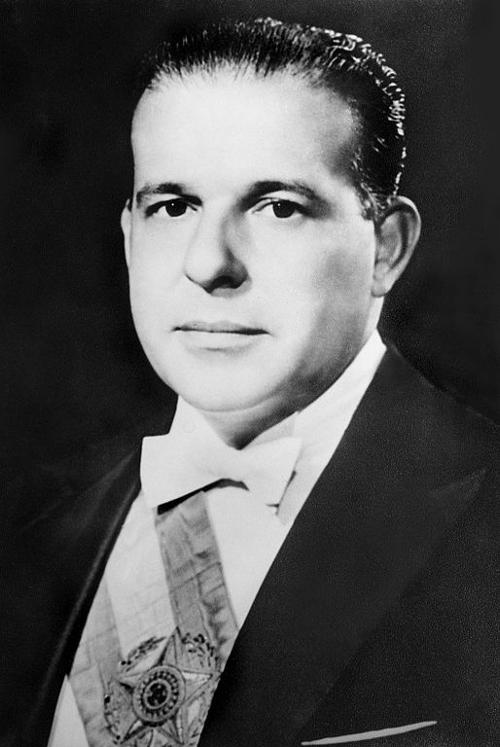 Brazil Joaoa GoulartPhoto: Public domain
Brazil Joaoa GoulartPhoto: Public domain
In 1961 Quadros turned against the United States, but at the same time also against its own supporters by more or less opting for the Soviet Union in the Cuba crisis. He had also harassed the ruling classes with his progressive approach to domestic difficulties, social contradictions and agricultural problems. To everyone's surprise, he resigned on August 25, 1961 and was replaced by Vice President Goulart, who was sworn in as president despite much opposition from the conservatives, military and middle class. Goulart launched a sweeping package of social reforms in 1963 after which military personnel and the business community prepared a coup with the help of the United States. Goulart's rather weak performance led to a series of disturbances. Large-scale starvation, looting and arson kept the military on alert almost constantly. A referendum held in January 1963 revealed that a large majority of the population wanted the presidential system restored; the parliamentary system had clearly failed.
On March 13, 1964, Goulart organized a popular demonstration for support, but shortly afterwards, the military rebelled against the government, with American warships in the Bay of Rio de Janeiro in the background. On April 2, 1964, Goulart fled to Uruguay and the generals came to power. During this black period in Brazil's history, the generals remained in power for more than 20 years.
The generals continued industrialization and major projects were started up again such as opening up the Amazon. However, the people of Brazil had to do without a free press, and human rights were not respected. In April 1964, the Commander-in-Chief of the Army, Humberto de Alencar Castelo Branco, was appointed president by a conference cleared of corruption and communist police, or so the military explained. From now on, an electoral college from Congress would elect the President. On December 11, 1965, a new opposition party was formed, the MDB, most of whose supporters belonged to the dissolved workers' party. In 1966 the two-party system was introduced: only the MDB and the ARENA, the governing party, were allowed. The media was subjected to even stricter censorship and the president reigned by decree, in short all the characteristics of a dictatorship.
The oppression of the population in the Branco period took very serious proportions. Opponents were persecuted and eliminated by death squads. Countless people just disappeared. Radical students and police, however, took up the battle ax, among other things, by a number of kidnappings of Western ambassadors. The results of the elections of 12 of the 22 governors, which took place on 3 September 1966, was therefore established in advance, because Castelo Branco had ensured that only ARENA candidates could be selected. In protest, the MDB did not participate in the elections. The presidential elections were held a month later. The Minister of War, Arturo da Costa e Silva, who, to the displeasure of the President, had run for ARENA, was elected President by both houses of Congress. The MDB did not participate in these elections.
On March 15, 1967, da Costa e Silva took office and a new constitution entered into force. Among other things, it provided for an indirectly elected President and Vice-President and for further narrowing down the powers of Congress by allowing the President to take legal decisions through emergency decrees and so-called "institutional acts". In dec. 1968 Congress was dissolved indefinitely and the government took power to govern by decree. Da Costa e Silva suffered a cerebral hemorrhage on August 31, 1969, and its functions were taken over by a military junta.
On October 7, the junta designated 63-year-old General Emílio Garrastazú Médici as a presidential candidate; officially elected President on October 25. On October 30, Médici was sworn in as president and a new constitution came into force, significantly restricting the powers of the legislature and greatly extending those of the executive. The systematic fight against the left-wing opposition was expressed in numerous arrests. Only the Church could afford to make a word of protest now and then, although certain measures were not forthcoming against her, including against the Archbishop of Recife, Dom Helder Câmara. The regime has been accused of torturing prisoners, upholding an unjust social structure, and exterminating Indians in the economic opening up of the Amazon. Discontent in the country grew sharply, in particular that the benefits of the "economic miracle", ie the strong economic expansion in the years 1967 to 1973, did not benefit the mass of the population. Guerrillero's - sometimes successfully - resorted to kidnapping diplomats to enforce their demands. Ernesto Geisel was elected president in January 1974. The political liberalization he promised failed to materialize. Under his rule, press censorship on newspapers and magazines was lifted, but censorship on the mass media of radio and television continued. The MDB achieved major victories in parliamentary elections in 1974 and 1978.
Return to democracy
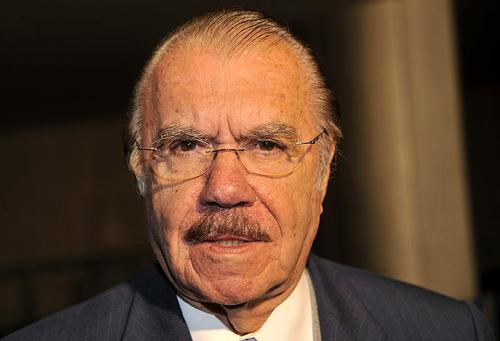 Brazil Jose SarneyPhoto: José Cruz/ABr CC 3.0 Brazil no changes made
Brazil Jose SarneyPhoto: José Cruz/ABr CC 3.0 Brazil no changes made
In November 1978, General João Baptista de Oliveira Figueiredo was elected President by an electoral college. Before his resignation, Geisel allowed the return of political exiles and abolished the most repressive institutional act.
Under pressure from the growing opposition, which was reflected, among other things, in demonstrations and strikes in the major cities, Figueiredo pursued a policy of "abertura", gradual political liberalization, after taking office on March 15, 1979.
At the end of 1979, an amnesty was declared for all political prisoners and those who had lost their political rights, and the two-party system was lifted. Under the new name PMDB, the MDB became a broad opposition party, including the still forbidden communist party. The ARENA government party was renamed PDS and relied mainly on traditional rural politicians. In the general elections of March 15, 1982, the opposition parties obtained a majority in the House of Representatives and ten government posts in the main States. The PDS was given twelve governors in the more sparsely populated states of the north and northeast, and it retained the majority in the electoral college that would appoint Figueiredo's successor.
The opposition lacked the two-thirds majority in the House of Representatives necessary to allow direct presidential elections. The PDS nominated banker Paulo Salim Maluf for president. However, part of the PDS was unable to agree with its candidacy and set up its own party, the Liberal Front Party (PFL), which supported PMDB candidate Tancredo de Almeida Neves. With this, Neves obtained a majority in the electoral college, who elected him President on January 15, 1985, and nominated José Sarney of the PFL as Vice President. Neves was due to be inaugurated on March 15, but had to be hospitalized the night before. After his death on April 21, Sarney was sworn in as President on April 22, 1985, ending 21 years of military rule.
The New Republic
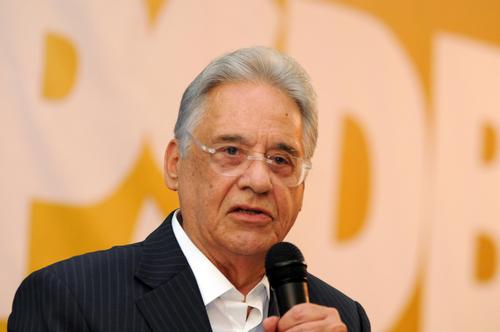 Brazil CardozoPhoto: Aécio Neves (CC BY 2.0) no changes made
Brazil CardozoPhoto: Aécio Neves (CC BY 2.0) no changes made
Initially, Sarney received broad popular support for his economic policy, the Cruzado Plan, which introduced a new currency (cruzado) and freezes wages and prices. However, the economic crisis, caused by a huge debt burden, did not lessen. The November 15, 1986 general election was a major victory for the PMDB, which won a majority in both houses of Congress. As of February 1987, Congress was renamed a Constituent Assembly to draft a new democratic constitution chaired by PMDB leader Ulysses Guimaraes.
On October 5, 1988, the new constitution was passed, maintaining the presidential system with some restrictions. The disappointment with Sarney's policies led to defeat for the PMDB and the PFL in the municipal elections of November 15, 1988. Major winners included the Labor Party PT of union leader Luis Inacio da Silva and the Democratic Workers' Party PDT led by Leonel Brizola. The presidential elections of November 15, 1989, where the population could directly elect a president for the first time since 1960, were ultimately won by right-wing populist Fernando Collar de Melo. In March 1990, he accepted the post of President but received little support from Parliament and sought support from Parliament by subject. Due to corruption of Collar and his immediate environment, Collar resigned in December 1992, just hours before the Senate was due to impose impeachment proceedings. Itamar Franco succeeded him as president.
In April 1993, a majority of voters voted in a referendum for the preservation of the republican form of government and for a presidential system over a parliamentary variant. A major corruption scandal involving dozens of politicians came to light in October. Based on its findings in January 1994, the Political Commission of Inquiry into Corruption nominated 18 Members for dismissal. Another study revealed close contacts between the underworld and politics. The federal budget goes for 40% on corruption practices.
The winner of the October 1994 presidential election was Fernando Henrique Cardozo. In the concurrent parliamentary elections, former President Sarney's PMBD remained the largest. To replace the cruzeiro real, a new currency was introduced, the real, which was pegged to the dollar. As a result, inflation fell sharply. In August 1994, the Mercosur customs union was established between Brazil, Argentina, Uruguay and Paraguay, eliminating much of the import tariffs and building a common external wall.
President Cardoso announced major reforms in February 1995, but he had to withdraw his plans in the social field after fierce union and political opposition and his tax reforms were shelved. Also in 1996, reforms were delayed or severely curtailed by the opposition. At the end of March 1995, the President announced an acceleration of land reforms, but here too, the practice was different. The privatization plan was also slow, as political parties, unions and other organizations feared a sell-out of national resources.
Economically, Brazil did not go badly after 1992. Inflation remained low in 1995 and 1996 and the period of hyperinflation appears to be over. Worryingly, urban unemployment continued to rise despite economic growth. In 2002, the Brazil International Monetary Fund granted a $ 30 billion loan, the largest loan in the institution's history. The loan aims to protect the country from an economic crisis and restore investor confidence in Latin America.
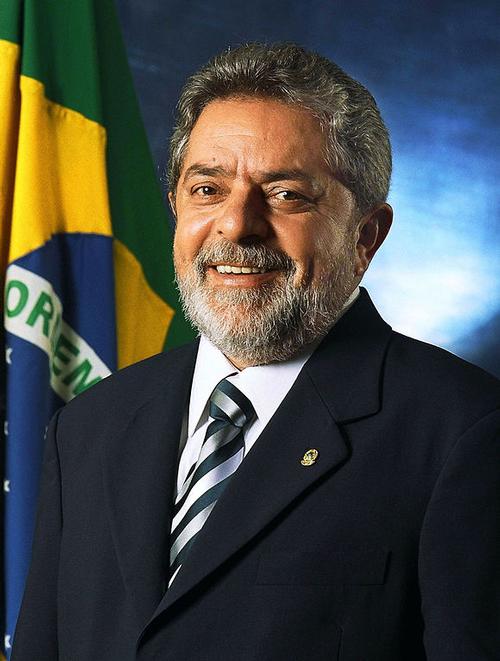 Brazil LulaPhoto: Ricardo Stuckert/Presidência da República CC 3.0no changes made
Brazil LulaPhoto: Ricardo Stuckert/Presidência da República CC 3.0no changes made
In October 2002, 57-year-old Luiz Inacio Lula da Silva (Lula for short) was elected 36th President of Brazil with 61% of the vote. On January 1, 2003, the successor to ex-President Cardoso was inaugurated as Brazil's first elected left-wing Socialist (Workers' Party) president. Leaders and representatives from 119 countries attended the inauguration, including Cuban President Fidel Castro. In the summer of 2005, a major corruption scandal hit the media. The government party, PT, has been accused of bribing MPs for gaining political support. Prime Minister Dirceu resigned in June, but President Lula himself was harmed by this affair.
The presidential elections in early October 2006 did not initially produce a winner. A second round had to decide who would become the next president: the incumbent head of state, Lula or his challenger Geraldo Alckmin, the social democratic ex-governor of São Paulo. Lula was severely affected by the corruption scandal in his party, obtaining only 48.6% of the 51% votes needed.
On January 1, 2007, Luiz Inácio Lula da Silva took office for his second term as President of Brazil. He obtained 60.8% of the votes. However, his Workers' Party (PT) only had 83 seats in the Chamber of Deputies and 11 seats in the Senate. For comparison, the PMDB (Partido do Movimento Democrático) achieved 89 and 17 respectively. The President is dealing with a Congress in which he always has to find a coalition for his government plans. This is not easy in a country where there is hardly any party discipline and politicians frequently switch sides.
In December 2007, Renan Calheiros, a key ally of President Lula, is forced to leave the field in connection with a corruption scandal. In October 2008, Brazil rejected an application by Iran to become a member of OPEC. In March 2010, Lula wants to play a more diplomatic role for Brazil and visits the Middle East and Iran.
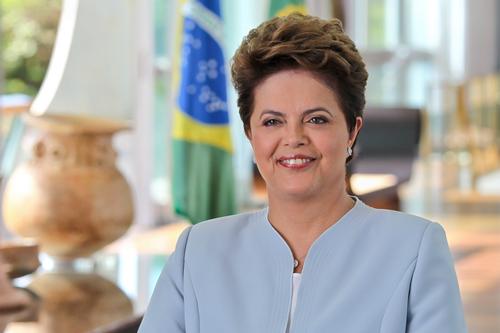 Brazil Dilma RousseffPhoto: Dilma Rousseff CC 2.0 Generic no changes made
Brazil Dilma RousseffPhoto: Dilma Rousseff CC 2.0 Generic no changes made
Workers' Party (PT) Dilma Rousseff became Brazil's first female head of state after winning the second round of the presidential election. 62-year-old Rousseff won approx. 55 percent of the votes. Her rival, Social Democratic José Serra, received about 45 percent of the vote. Roussef will be sworn in on 1 January 2011. Then she succeeds the current head of state Lula da Silva. There are many demonstrations in Brazil in 2013, the causes of which are the rising cost of living and anger at the costs incurred to host the 2014 FIFA World Cup. Things remain restless in 2014, where the World Cup was held in June and July and Rousseff was reelected. In December 2015, Congress started impeachment proceedings against Rousseff. She was impeached in May 2016 and succeeded by Michel Temer as Acting President. The Olympics were held in Rio de Janeiro in August 2016. Michel Temer remains president through 2018.
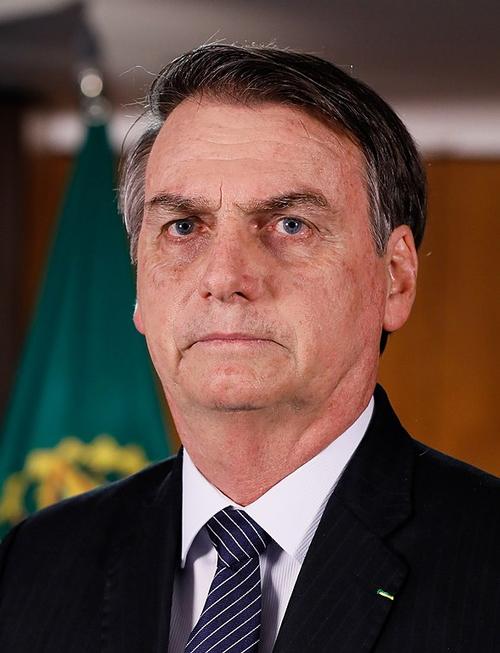 Bolsenaro BrazilPhoto: Isac Nóbrega/PR CC 2.0 Unported no changes made
Bolsenaro BrazilPhoto: Isac Nóbrega/PR CC 2.0 Unported no changes made
Retired army officer Jair Bolsonaro won a decisive victory over the centre-left Workers' Party in the October 2018 presidential election, and took office in January 2019. As a member of the Social Liberal Party, an anti-establishment group that combines social conservatism and pro-market policies, Mr Bolsonaro is a deeply polarising figure whose earlier defence of the military dictatorship has alarmed many Brazilians. After his win he has tried to assure voters that he will defend democracy and uphold the constitution. Mr Bolsonaro's promise to cleanse Brazil of corruption proved particularly popular in a country that has seen dozens of politicians from the mainstream parties jailed. Among his key policies are a relaxation of gun laws to allow everyone to own a firearm, a cut in state intervention in the economy, and the withdrawal from the 2015 Paris climate change agreements In 2020 president Bolsonaro causes controversy by refusing to support measures to halt the spread of the Covid-19 virus.
Former-President Lula was convicted of accepting bribes and served jail time (2018-19), although his conviction was overturned in early 2021. Lula's revival became complete in October 2022 when he narrowly defeated incumbent Jair Bolosonaro in the presidential election. Lula will assume the office on 1 January 2023.
Sources
Bayer, M. / Brazilië
Gottmer/Becht
Bayer, M. / Brazilië : mensen, politiek, economie, cultuur
Koninklijk Instituut voor de Tropen/Novib
Bender, E. / Brazil
Chelsea House Publishers
Brazil
Apa Publications
Brazil
Lonely Planet
Brazilië
The Reader's Digest
Dekker, J. / Reishandboek Brazilië
Elmar
Heinrichs, A. / Brazil
Children's Press
CIA - World Factbook
BBC - Country Profiles
Copyright: Team The World of Info